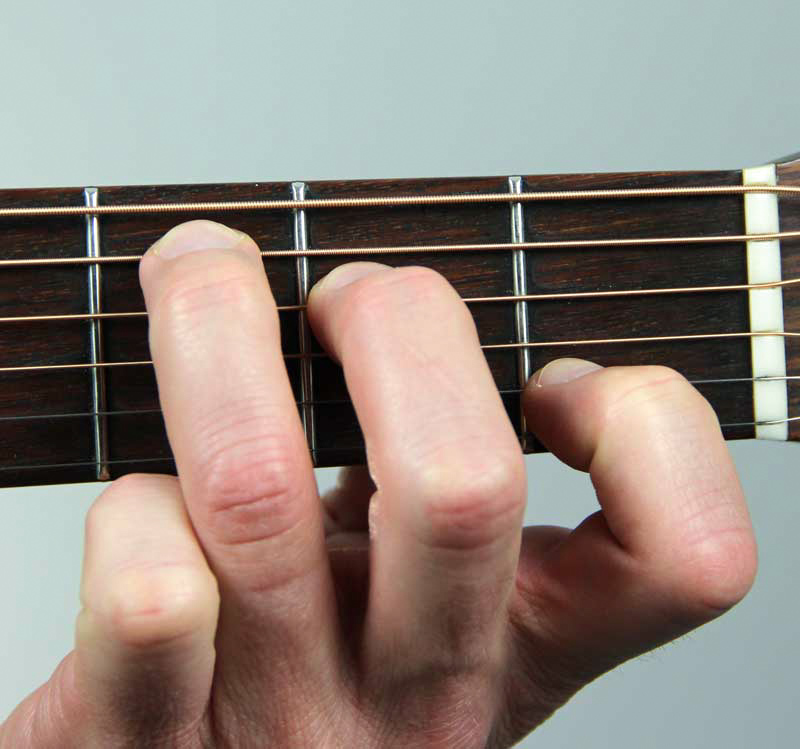
Then, position your 3rd finger on the 10th fret of the A string and your 4th finger on the 10th fret of the D string. There’s nothing to it!įirst, use your 1st finger to press on the 8th fret across all the frets on the fretboard. Guitar Chord Shape Tip: It’s easiest to start this chord shape like you are making an open G chord. Once those are placed, I can find the 8th fret of the high E string for my 4th finger.Īfter all those fingers are down, you can use your 1st finger to make a half bar on 5th fret, pressing the first four strings of the fretboard. I like to place my third finger on the 8th fret of the low E string and then put my second finger down on the 7th fret of the A string. You are just using your first finger to barre the strings at the fifth fret. This chord is similar to the open G chord shape.
#ALL C CHORDS GUITAR HOW TO#
How to Play a C M Guitar Chord at the 5th Fret Try it both ways and see which way you think is easier. I’ve found that it’s easier than trying to get three different fingers lined up and then putting the first finger barre down. You don’t have to play the low E string since the right hand won’t be playing it, but you can add it in for a little extra bass note at the bottom of the chord.Ĭ Major Chord Guitar Tip: I like to barre the 2-4 strings with my third finger.

Lastly, make a bar with your 1st finger across the 3rd fret. Next, place your 3rd finger on 5th fret of the G string, and right after that, set your 4th finger on the 5th fret of the B string. Once you feel comfortable doing this exercise, take a shot with the complete chord.ĥ Different C Chord Guitar Variations How to Play a C Chord at the 3rd Fretīegin by putting your 2nd finger on the 5th fret of the D string. If you are having a hard time playing the C major open chord, you can try splitting the fingering and practicing it separately – first, working with fingers 1 and 2, then with fingers 2 and 3, and lastly with fingers 1 and 3. This is mostly because this particular case demands the guitarist to place fingers 1, 2 and 3 on different frets – in consequence, the left hand (right if you are left handed) needs to develop a considerable elongation capacity in order to open up wide and reach each fret properly. Short tip for beginners: When learning basic guitar harmony, C major usually appears to be the most troublesome open chord. Sometimes using all three of your fingers at once can be a bit challenging, so you can make a shortened version of the open C chord by simply using your 2nd and 3rd fingers like we did in the first chord and only playing the 3-5 strings to make the C major triad. Lastly, set your 3rd finger on the 3rd fret of the A string. Open C Major Finger Position #1įirst, you can start by placing your 1st finger on the 1st fret of the B string.Īfter that, put your 2nd finger on 2nd fret of the D string. You can work on the easier one and work your way up to the more difficult one. Both start on the C note on guitar string number 5. That’s why I split the open chord into two different C chord variations and fingering positions. Making the C major open chord fingering can be a bit challenging for a beginner. Here are the first six chord positions and variations you can play a C-chord on guitar neck. You can easily play a C chord on acoustic guitar in several different positions on the guitar neck. When working on C major key, it’s important to keep in mind that this is the only major key that does not use altered notes – this meaning that no sharps nor flats in the key of C. The C note is the root note followed by the E note, the major third that two steps from the root, and the G – the perfect fifth that is three and a half steps from the root, C.



4.1 How to Play a C Chord at the 3rd Fret.4 5 Different C Chord Guitar Variations.3 How to Play an Open C Chord on Guitar.


 0 kommentar(er)
0 kommentar(er)
